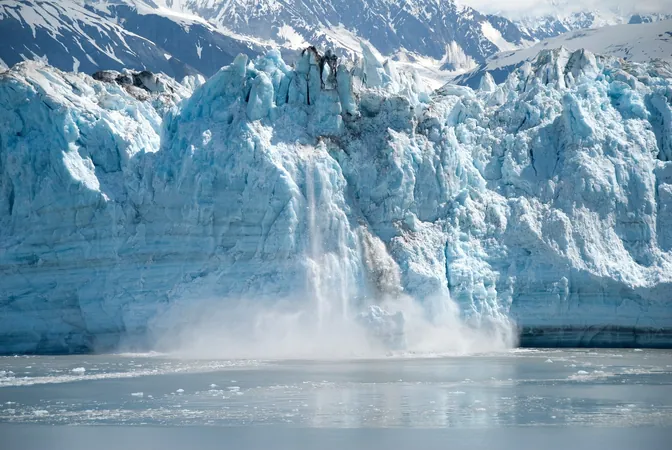
Glaciers Unravel the Secrets of Volcanic Eruptions: A New Predictive Tool?
2024-11-13
Author: Wei
Introduction
In a groundbreaking study, researchers have revealed that glaciers located within three miles of active volcanoes flow nearly 50% faster than the global average. This significant discovery could pave the way for advanced early warning systems designed to detect volcanic eruptions before they occur.
Research Details
Published in *Communications Earth & Environment*, the interdisciplinary team from the University of Aberdeen, University of Birmingham, and Manchester Metropolitan University analyzed velocity data from approximately 85% of the world's 217,000 glaciers. By controlling for various factors such as climate, ice thickness, and surface slope, the study identified a remarkable 46% increase in the speed of glaciers close to active volcanoes.
Notable Glaciers Observed
Among the notable glaciers examined were those connected to some of the world's most iconic volcanoes, including Mount Rainier and Glacier Peak in Washington State, Mount Redoubt and Mount Veniaminof in Alaska, and Iceland's infamous Eyjafjallajökull, which dramatically erupted in 2010, causing widespread air travel disruption affecting an estimated 10 million passengers.
Geothermal Influence
The research suggests that the geothermal heat generated by nearby volcanic activity significantly influences the melting of glacier ice. This melting reduces friction between the glacier and the underlying bedrock, leading to faster glacier movement. The implications are profound, as these accelerated glacier flows could serve as indicators of impending volcanic eruptions.
Expert Insights
Dr. Joseph Mallalieu from the University of Birmingham, one of the study's lead authors, emphasized the urgent need for enhanced volcanic hazard mitigation strategies. "Glacier-covered volcanoes represent some of the greatest dangers in the world due to the potential for glacial meltwater to unleash catastrophic floods and debris flows, posing significant threats to nearby communities."
Monitoring as a Predictive Tool
The research provides a compelling case for utilizing glacier velocity monitoring as a novel tool in the complex equation of volcanic activity detection. By observing changes in the speed of glaciers, volcanologists could potentially identify signs of increased volcanic activity months before an eruption, allowing for proactive measures such as evacuations or flight restrictions.
Future Research Directions
Co-author Professor Matteo Spagnolo from the University of Aberdeen remarked, "The ability to detect changes in glacier velocity could effectively redirect monitoring resources toward volcanoes at a higher risk of eruption, giving local authorities the foresight needed to make informed decisions well in advance."
Conclusion
This discovery opens up exciting avenues for future research in glaciovolcanology. Dr. Iestyn Barr from Manchester Metropolitan University expressed optimism about the study’s findings, stating, "We are eager to further explore how glacier monitoring can enhance our understanding of volcanic behavior globally, particularly for ice-covered volcanoes."
As climate change continues to impact glacial systems and volcanic landscapes, the intersection of these two fields presents a critical frontier in disaster preparedness and risk management. With further studies, the promise of predicting volcanic eruptions could significantly enhance public safety measures and save lives in regions prone to such natural disasters. Stay tuned as this development could change the landscape of volcanology as we know it!



 Brasil (PT)
Brasil (PT)
 Canada (EN)
Canada (EN)
 Chile (ES)
Chile (ES)
 España (ES)
España (ES)
 France (FR)
France (FR)
 Hong Kong (EN)
Hong Kong (EN)
 Italia (IT)
Italia (IT)
 日本 (JA)
日本 (JA)
 Magyarország (HU)
Magyarország (HU)
 Norge (NO)
Norge (NO)
 Polska (PL)
Polska (PL)
 Schweiz (DE)
Schweiz (DE)
 Singapore (EN)
Singapore (EN)
 Sverige (SV)
Sverige (SV)
 Suomi (FI)
Suomi (FI)
 Türkiye (TR)
Türkiye (TR)